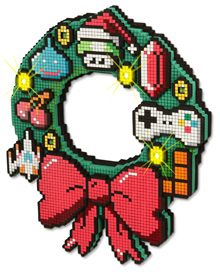
As I write this, it is the last day of “Not x86 Week” over at Reddit’s r/Retrobattlestations. As one might guess, this week’s competition is to display a vintage system based on any CPU other than an Intel 8086 or any of its descendants. For this round, I featured the Apple //c that’s situated on my desk in my D.C. workplace.
I setup the //c, which has lived in a few different spots since I acquired it back in 2005, on the desk in my cubicle over a year ago. Its serial port is connected (with a wire I put together from an old Atari 8-bit video cable) to a USB-to-serial adapter, which is plugged into a Raspberry Pi 2, which itself is connected to the guest WiFi network at the university. This allows me to use a terminal program on the //c, such as ProTerm, Modem MGR, or AGate, to allow it to become a standard serial terminal to the Raspbian Linux OS running on the Pi. (Old-school serial terminal support is still baked-in to modern Linux distributions.) I go into greater detail on the overall approach in my 2007 post detailing my first go at using this //c as a serial terminal — to a Mac mini, in a previous workplace.

It occurred to me this past Friday to use the //c for my entry, and as I mentioned, the competition ends tonight. Rather than just turning on the //c and putting some text on the screen, I thought it would be a nice touch to display an “Intel Outside” logo (quite popular over the years with Mac and Amiga folk) on the screen, but that meant finding the logo online, somehow converting it to an Apple II high-res (HGR) image, and getting it over to the //c. If the notion of using the //c for the competition had occurred to me earlier in the week, I probably would have just used my LAN-connected Apple IIgs at home to write out a 5.25-inch floppy with the image file on it, but this was my last day in the office before the weekend conclusion of the competition. Much was already in place, as described, to get this done, but it was a bit of a process to go the full distance.
I dug around online and found a program called Buckshot, which is an image conversion utility for macOS, Windows, and Linux that can convert modern format images to an image in any of the 8-bit Apple II image modes. It’s a nice little utility with a handy image preview function and is based on a program called bmp2hdr, which I covered / demoed in an earlier post on this blog. With this in hand, I did a few searches, found the amusing logo image, and created a mono, high-res Apple II image (280×192 pixels) from it.
Continue reading


 ‘Tis the season, and that means it’s time to push out the ninth annual Byte Cellar vintage computer Holiday demo roundup so everyone can feel that warm, fuzzy, pixellated holiday glow. With scanlines. Enjoy!
‘Tis the season, and that means it’s time to push out the ninth annual Byte Cellar vintage computer Holiday demo roundup so everyone can feel that warm, fuzzy, pixellated holiday glow. With scanlines. Enjoy! I was recently listening to the celebratory
I was recently listening to the celebratory 






 In 1989 I wrote a letter (envelope, stamp, and all) to game publisher California Dreams asking a technical question about the game Tunnels of Armageddon for the Apple IIgs. But, they never wrote back.
In 1989 I wrote a letter (envelope, stamp, and all) to game publisher California Dreams asking a technical question about the game Tunnels of Armageddon for the Apple IIgs. But, they never wrote back. 